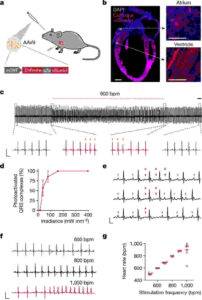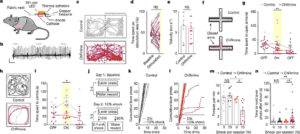Anxiety and erratic heartbeat are common in hyperactive personalities. Previously multiple studies did reveal how an animal’s and human’s heartbeat speed up in situations of anxiety. These studies also marked up the evidence that signals are always passed on from the brain to the body. And based on the fast beating heart, the organism reacts.
However, scientists, this time, were aiming to develop a reversed version of chronic anxiety and heartbeat. Where they focused on the pre-proposed theory that there can be a dominant flow of information from the body toward the brain. Also, they did find the suggestions made by modern correlative studies quite interesting. Which essentially created a link between alterations in cardiac rhythms and affect regulations.
Further, these studies also indicated a relationship between cardiac interoception and anxiety. The researchers have talked about noticeable alterations within the brain’s insular cortex. That is primarily dependent on regulating emotions and processing physiological signals. Now moving on to the study, the researchers wanted to find out how cardiac psychology can regulate the emotional state of an organism.
Fast beating heart leading to anxiety attack – The vitals of the study
While anxiety and heart beating too fast is common among all living organisms. However, bioengineers and psychiatrists from the University of Stanford did come together, speeding up the heart rate of lab mice. And also, at the end of the study, did notice the animals showcased higher symptoms of anxiety.

During the study period, the researchers developed a noninvasive optogenetic control method or particular cardiac rhythms (when the mouse is active). The team did notice that artificially controlled heart rates, which are more than the regular, i.e.,900 bpm, did induce anxious behavioral effects among the mice. On the other hand, asynchronous stimulation that is close to the baseline heart rate at 660 bpm did not lead to any such behavior.
The study also did support the idea that the insular cortex is directly involved in monitoring the entire interoceptive state (internal), ready to instruct essential responses in the behavioral state.
The method used in triggering anxious behavior among the mice
The study did follow all the animal care guidelines stated by the administrative panel of the University of Stanford on laboratory animal care. Also, the team did abide by the guidelines put forward by the National Institute of Health. And they did use C57BL6/J (JAX 0064) wild-type female and male mice. The animals got to stay in plastic cages comprising disposable bedding. The team did proceed forward with the behavioral experiment under the dark phase.

The researchers went forward with applying ChRmine (recently discovered channelrhodopsin, with high sensitivity to light) to the outer layer of the mouse’s heart and then closing up their chest space. Now, they did place light sewed vests on the mouse. Turning on the lights did make the charged particles move within the mouse’s heart, increasing the heart rate. The researchers now went forward, placing the mouse within a stress test box. That did record speeding up heart rates. However, on the behavioral aspect, these animals behaved the same as they would under stress or anxiety.
A brief overview of the setup
- The mice were all anesthetized, and their chest was shaved. Now, a 1.4-F pressure sensor-equipped Millar catheter was used to measure the Systolic blood pressure levels. They did insert the catheter through the carotid artery in the right and into the left ventricle.
- In the other group, researchers did implant personalized head plates and adhesive-based ‘clear-skull caps.’ This group was restricted from having water and was only allowed to drink before their recording sessions.
- A 589-nm laser did deliver 240 mW mm−2 of light on the chest, as per control.
- 591-nm Amber Rebel LEDs (PC) measuring 3 × 4.5 mm were used to generate personalized optical stimulators (wearable).
- The mice were habituated to the entire setup, wearing the pacemaker hardware at least five days before the experiment.
- Isoflurane was used to anesthetize the animal before placing the optical pacing vest on them. And following by, they were allowed to recover in the home cage at least 1 hour before the experiment.
- The research team did use a protocol of stimulation comprising a pulse width of 10ms standing at 900bpm.
- The behavioral tracking methodology was performed over software for blinded automation.
- Different testing environments were scheduled to determine the behavioral aspect of the mouse. It goes as RTPP, EPM, Oprant Lever pressing Task, TRAP2 Labelling, and OFT.
Fast beating heart leading to anxiety attack – Future scope
The study does prove that it is possible to alter the regular functions of a particular cell or an organ within a fully-grown mammal. However, this time their main area of study was animal behavior that also for a few minutes. In the future, studies conducted using wireless devices can facilitate full-fledged monitoring of the desired behavior among the targeted population over days and weeks. Also, the team behind the study did state that refining strategies for targeting specific cell types will lead to minimally non-invasive and invasive optogenetic dissection of certain cells. Also, because the study did not include any specialized surgery, there is immense scope for the same to be used over a broad spectrum. This opens up a huge opportunity to explore the complex region between physiological systems within health and disease.



